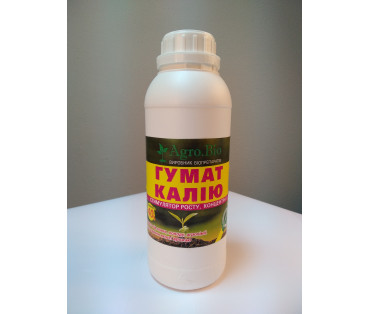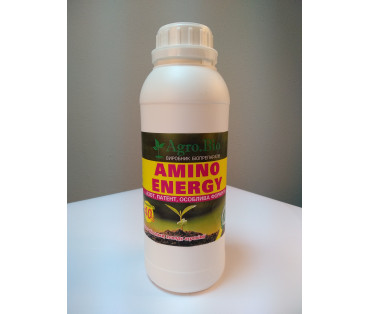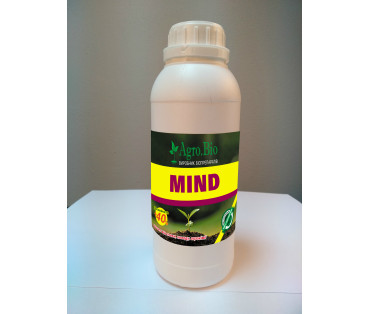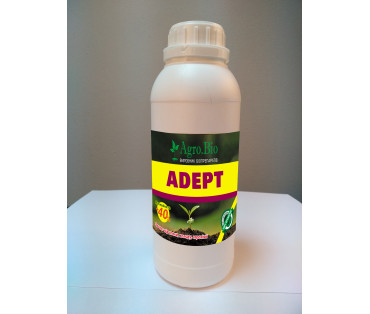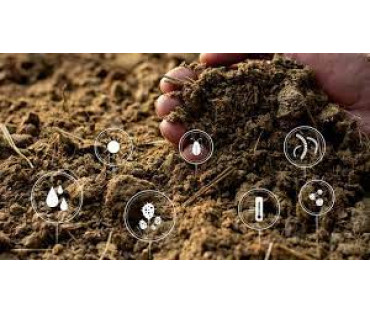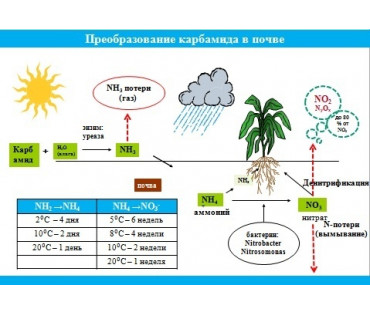Importance of soil organic matter and fertilizers for plant nutrition
For any farm, increasing the efficiency of soil fertility is of great importance.
A huge amount of nutrients is concentrated in soils - in humus (humus), organic residues of plant origin and in mineral compounds.
Approximate reserves of humus, nitrogen, and phosphoric acid for different soils are as follows
(Table 1).
Table 1
Stocks of humus, nitrogen and phosphorus (in m / ha) in different soils
Soils | Layer 0-20 cm | Layer 0-100 cm | ||||
hummus | N | P 2 O 5 | hummus | N | P 2 O 5 | |
Powerful chernozems | 160 | 11.0 | 2.7 | 700 | 36.0 | 11.9 |
Ordinary chernozems | 140 | 7.0 | 2.4 | 500 | 25.0 | 8.5 |
Podzols | 50 | 3.2 | 0.8 | 100 | 6.6 | 1.7 |
Serozems | 40 | 3.7 | 0.7 | 80 | 7.5 | 1.4 |
Nitrogen in the soil is mainly concentrated in humus, averaging 5-6%; a small part of it is contained in the form of mineral compounds. A significant part of phosphorus is also found in
organic compounds. In podzols, for example, phosphorus of the organic part is 20-25% of its total amount, and in chernozems - about 50%. Potassium in soils is found mainly in mineral form. The gross content of potassium in terms of K 2 reaches 60-80 tons per hectare.
Considering that 40-60 kg of nitrogen, 20-25 kg of phosphorus and 28-30 kg of potassium are used for a wheat grain crop of 20 centners per hectare , their reserves in a 20-cm layer of chernozems provide such a grain yield for 170-230 years, and the reserves of podzols and gray soils - for 60-75 years. A meter layer of podzols and gray soils can provide a high yield of agricultural crops with nitrogen for 130-150 years, the same layer of chernozems - 500-700, and drained lands - up to 2500-2800 years. For even more years, there are reserves of phosphorus and potassium in the mineral soil. Some nitrogen, phosphorus, potassium and other elements
nutrition in the soil is contained in plant residues (roots, crop residues). The largest amount of these residues (up to 250 t/ha)
is found in virgin soils. Although the amount of nutrients in plant residues is relatively small, it is valuable that these substances are rapidly transformed into plant-available compounds.
Activation of the transformation of humus and plant residues by proper tillage and agricultural technology is the most important factor in increasing the yield in the country. However, the main means of increasing the gross harvest of agricultural products, especially in areas where podzolic and podzolized soil varieties are distributed, are organic fertilizers - manure, peat and various composts. Their use often doubles and even triples the crop yield.
The content and composition of organic matter in the soil
It is known that the sources of organic matter in soils are plant residues and microorganisms, as well as manure and composts. These materials, from which soil humus is subsequently formed, by their chemical nature consist of carbohydrates and substances close to them (monosaccharides, di- and trisaccharides, polysaccharides), lignin, nitrogenous compounds (protein substances, amino acids, amides, alkaloids, chlorophyll, glucosides), fats and related substances (palmethic, stearic, oleic, linoleic and linolenic acids, lecithins, phytosterols, wax), resins and terpenes, subterin, cutin and sporopollenins, as well as plant ash substances.
Plant residues in the soil, undergoing a variety of transformation processes, are destroyed with the formation of simple compounds (H 2 O, CO 2 , NH 3 , HNO 3 , etc.) or pass into more inert forms of organic matter.
The beginning of a deeper study of the composition and nature of humus was laid by Sprengel in 1826, who achieved great success with his studies of humus.
Further study of the composition and nature of soil humus is associated with the names of Berzelius, Mulder, Herman, Schreiner, Shori, Trusov, Sven-Oden, Schmuck, Williams, Waksman, Tyurin, Kononova and many others.
The humus substances of the soil belong to a kind of high-molecular organic compounds that have a very complex chemical composition, which has not yet been exactly deciphered; they are formed by soil bacteria and fungi.
Depending on the biological type of synthesis and destruction of soil organic matter, V. R. Williams distinguishes three groups of humus organic acids:
a) humic (a group of humus acids of black color) - are formed by aerobic bacteria;
b) ulmic (brown humus acids) - are formed by anaerobic bacteria;
c) crenic, or fulvic acids (a group of colorless humic acids) - synthesized by fungi characteristic of forest plantations, and such acids, under certain conditions, turn into apocrenic acids.
The process of formation of soil humus includes the decomposition of plant residues and other forms of dead organic matter into simpler oxidized or reduced compounds; on the other hand, it proceeds as a synthesis of a very complex nature of humus acids. The processes of humus formation - decomposition and synthesis - are the result of the enzymatic activity of soil microorganisms.
Scientists-specialists in this field argue that soil humus is a very complex and dynamic complex of numerous and very diverse compounds, but their chemical nature. Four groups of substances are distinguished in this complex: organic substances of undecomposed remains of plants and animals, organic substances of living and undecomposed dead microorganisms, intermediate decomposition products of complex organic compounds, humic substances and bitumen as a product of peculiar processes of physicochemical and extracellular enzymatic synthesis.
They believe that in the composition of humus, along with compounds known from the chemistry of plant and animal substances, specific compounds are formed that arise as a result of special processes characteristic of humus and uncharacteristic of living nature.
The chemical composition of humus is characterized by the following groups of compounds.
Humic substances. This group includes soluble and alkali-insoluble dark-colored substances characteristic of soil humus, which are high-molecular carboxylic acids with pronounced properties of colloids. Their common property is great resistance to acid hydrolysis and insolubility in acetyl bromide, which sharply distinguishes these substances from most substances of plant origin, including lignin, with which humic substances have a common property - resistance to acid hydrolysis.
The lowest content of humic substances (about 45-50% of the total amount of humus) corresponds to acid podzolic soils, and the highest (70-90%) - to chernozems and meadow-marsh soils; humus-calcareous soils and forest burozems occupy an intermediate position.
Humic substances are further divided into three groups:
a) humic substances that are insoluble in alkalis;
b) humic acids, soluble in alkalis and insoluble in alcohol;
c) hematomelanic acid, soluble in alcohol.
In relation to the total amount of humus in the soils of Ukraine, humic acids contain from 10.1% (podzolized forest soils) to 40% (leached chernozems).
Soil and peat humic acid contains carbon, oxygen, hydrogen, nitrogen, and ash. The nitrogen content is 3.5-4%. Suzuki and Schmuck found amino acids (alanine, aminovaleric acid, proline, leucine, aspartic acid, glutamic acid, tyrosine, histidine), amides, and nitrogen of the non-hydrolysable residue in the hydrolysis products of humic acid. However, only half of the total humic acid nitrogen is capable of hydrolytic cleavage.
It is believed that in terms of ash-free and nitrogen-free substance, soil humic acid contains 58.8% carbon, 36.1% oxygen, 5.1% hydrogen, and hematomelanic acid - 59% carbon, 36% oxygen and 5% hydrogen.
Non-humic substances (lignin, cellulose, hemicellulose, proteins, low molecular weight degradation products).
In relation to the total amount of humus, the content of lignin in mineral soils is 5-10 percent.
Compared to hemicelluloses, cellulose in soils contains much less, which is explained by the property of cellulose of plant residues to decompose. In the upper soil horizons, the content of cellulose in humus ranges from 1 to 6-7 percent.
The total amount of nitrogen in humus is on average about 5%. Only a small part of organic nitrogen dissolves in water. Although after hydrolysis a significant part of the nitrogen passes into the acidic solution (in the form of amino acids and amides), it is still believed that part of the nitrogen is bound into compounds other than proteins of plant and animal origin.
Bitumen (fats, resins, wax, fatty acids, etc.). The content of these substances in soils in relation to the total amount of humus ranges from 5% (in aerated soils) to 15-20% (in soils where decomposition occurs under anaerobic conditions).
Shorey Martin, Waxman, Norman, Bartholomew came to the conclusion that from 10 to 30% of organic carbon is in the soil in the form of polyuronides. Kojima showed that about 25% of the nitrogen in soil organic matter is in the form of compounds that do not go into solution during hydrolysis, about 30% is in the form of amino acids, 10% of nitrogen is in the form of ammonia, the remaining 20% is in other forms in solution.
The content of leucine, isoleucine and valine in relation to the total nitrogen of amino acids is 33%, hydroxycarboxylic
amino acids - about 20% and dicarboxylic amino acids - about 25%. Aspartic, glutamic, and possibly oxyglutamic acids make up about 50% of the dicarboxylic amino acids.
E. Russell noted that phytin, compounds of nucleic acid and nucleotides are found in the soil from organic phosphorus compounds. In the soil of the state of Iowa, about 40-50% of the phosphorus of organic compounds was hydrolyzed to phosphates, of which about 66% was phytin. It is assumed that sulfur in the soil is contained in the form of cysteine and cystine, which are part of the proteins from plant residues.
Since the time of Liebig, scientists have argued that soil humus serves as a direct source of mineral nutrients. Among these substances, in addition to CO 2 , NH 3 and nitrates, phosphates, sulfates and other mineral compounds necessary for plant nutrition are of great importance .
On chernozems, the amount of released CO 2 varies from 15 to 77 kg/ha per day, and when the sod layer of meadow soil decomposes, it is 20.0–240 kg/ ha. Recently, it has been shown that soil carbon dioxide is assimilated by the root system of plants.
Studies by many scientists have shown that the decomposition of humus on fallow fields in podzolic soil causes the accumulation of nitrates by the time of sowing in the amount of 0.5-1 tons, while in chernozems - up to 2.5 tons of saltpeter per hectare.
Various organic compounds, a significant part of which can be formed in the soil as intermediate degradation products, such as creatinine, arginine, histidine, guanidine, xanthine, hypoxanthine and nucleic acid, can be absorbed by plants instead of nitrates and ammonia, sugar - as a source of carbon , lecithin and cystine - as sources of phosphorus and sulfur.
The content of organic matter in the soil increases in proportion to the input of non-plant residues, but depends on the nature of the input. Manure and composts are the most important source of organic matter in well-ploughed soils.
The rate of decomposition of organic matter in the soil depends on the composition of plant residues or organic fertilizers, aeration, moisture, temperature, chemical and physical properties of the soil.
Different soils contain different amounts of organic matter, as shown in Table 2.
table 2
Reserves of organic matter in soils
Soils | Gum content _ in the upper layer, % | Total amount of humus | |
per 1 m 2, kg | per 1 ha, m | ||
Serozems | 1-2 | 5 | 50 |
Light chestnut (brown semi-desert) | 1.5-2 | 10 | 100 |
Dark chestnut (and southern chernozems) | 3-4 | 20-25 | 200-250 |
Ordinary chernozems | 7.8-8 | 40-50 | 400-500 |
Powerful | 10 | 80 | 800 |
leached | 8-7 | 60-50 | 600-500 |
Forest-steppe podzolized | 4-6 | 15-30 | 150-300 |
Podzolic of the northern forest zone | 3-4 | 8-12 | 80-120 |
Krasnozems, burozems and podzolized soils of humid subtropics | 4-6 | 15-30 | 150-300 |
Humus-calcareous soils of forest areas | 4.8-8 | 20-40 | 200-400 |
mountain meadow | 25' | thirty | 300 |
The fundamental task of agriculture is the rational use and regulation of the content of humus in the soil through cultivation, alternation of crops in crop rotations, the introduction of manure and compost, green manure, peat farming, drainage and irrigation reclamation, the use of artificial organic and organo-mineral fertilizers.
Soil cultivation enhances the decomposition of humus, which is especially noticeable when growing row crops. Various plants increase the content of organic matter in the soil. The systematic introduction of manure or compost significantly increases the content of humus in the soil.
Soil organic matter as a source of activators plant growth
Everyone knows the great importance of soil organic matter as a source of ash and carbon nutrition for plants.
In the organic part of the soil, the total reserves of such essential elements as nitrogen and phosphorus are estimated in tons per hectare. A meter-long layer of podzolic soils contains about 6 t/ha, in forest-steppe podzolized soils - up to 12, in chernozems - up to 24-35, in chestnut soils - up to 10-15, in gray soils up to 7-10 t/ha of nitrogen. The amount of organophosphorus compounds in terms of P 2 O 5 is about 0.5 t/ha in podzolic soils, and about 1.5 t/ha in chernozems. All this should be considered as a huge reserve of nutrients for plants, which, gradually mineralizing, is slowly used by them. However, the importance of organic substances in plant nutrition cannot be limited only by the function of the reserve of ash elements.
Based on numerous studies, it has been proven that the soil contains organic substances that can take part in the physiological and biochemical processes associated with respiration, metabolism, assimilation of elements of the ash nutrition of plants, which affects the growth, development and productivity of plants. Among these organic compounds, the importance of growth activators should be pointed out. Soil organic matter is a source of plant growth activators.
This group of organic compounds should include vitamins, auxins and other biotic substances (entering the soil with root secretions of plants, with organic remains of animal and vegetable origin, with manure, various kinds of composts and formed in significant quantities by soil microflora), antibiotics, biological activators , as well as humic acid and humates.
The presence of various vitamins in soils. Scientists have discovered vitamins of the aliphatic series (for example, pantothenic acid), aromatic series (for example, alpha-aminobenzoic acid), various groups of heterocyclic vitamins (for example, nicotinic acid, pyridine derivatives, thiamine, biotin, riboflavin, folic acid, etc.). In the arable layer of soil on an area of 1 ha , vitamins contain from several hundred grams to several kilograms.
Although plants are inherent in the properties of independent synthesis of all the necessary vitamins, a positive effect of additional supply of vitamins to plants through the roots or by foliar feeding, especially in the early periods of their growth, has been established.
The group of biotically active soil substances includes auxins, which enhance growth processes and the development of the root system. Heteroauxin (beta-indoleacetic acid), used in horticulture and vegetable growing for rooting cuttings and seedlings and for accelerating fruit ripening, is formed in the soil as a waste product of various soil microorganisms.
The soil contains organic substances produced by microorganisms that have antibiotic properties (streptomycin, penicillin, terramycin, etc.), which affect the composition of soil microbial cenoses, and when they enter plants, they retain their properties for a long time and can protect them from diseases. It is also known that penicillin, streptomycin and terramycin affect the movement of nitrogen, phosphorus and potassium in the plant.
Antibiotics vitamins in an unchanged form enter the plants through the root system and are included in the life processes of metabolism.
Many organic compounds of an individual nature, such as aminocarboxylic (in particular, succinic, fumaric) and other acids, have the properties of biological activators. Pre-sowing treatment of seeds of various plants with weak concentrations of succinic and fumaric acids has a positive effect on the vigor of germination, on the growth of roots and aboveground organs of plants, on the size and quality of the crop. This group of abiotic substances of organic compounds is the products of the vital activity of many groups of soil microorganisms and their presence in soils and soil solutions is beyond doubt. This is evidenced by the results of experiments carried out by our scientists, which showed that the addition of small amounts of soil solution to the nutrient medium of aquatic cultures on the Knop mixture had a positive effect on the growth of barley and wheat.
Our research has established that in the root residues, as well as in organic fertilizers, there is always a small amount of thiamine - a vitamin. In 1 which had a positive effect on the growth of roots in length.
The presence in soils rich in organic matter of a significant number of microorganisms and their secretions causes the formation of organic growth activators in them. In humus substances, for every 100 g of soil rich in organic matter, there can be 980 micrograms of riboflavin, 15-30 micrograms of biotin, 15 micrograms of thiamine, and in soils poor in humus substances - only 10-15 micrograms of riboflavin, 1.5-2 micrograms of thiamine and 0.06 micrograms of biotin.
Organic fertilizers contain aneurin, biotin and various amino acids, which can improve the nutritional conditions of plants. It has been established that physiologically active substances such as biotin, riboflavin, neurin, pantothenic, folic and nicotinic acids accumulate in composts during their maturation, which significantly increase their quality and play an important role in the process of plant nutrition.
Of great interest are numerous studies of the physiological significance for plants of the group of humic substances proper.
Humic substances isolated from peat, fossil coals and soils in the form of highly dispersed sols and true solutions enhance the growth of higher plants in small doses.
Humic substances activate the growth and development of roots in plants, especially in the early phases of their growth, and also affect the physicochemical state of plant protoplasm.
It was noted that in the presence of humic substances, the permeability of plant cells increased, which contributed to an increase in the flow of water and nutrients into plants.
As Khristeva's studies showed, sols and solutions of humic acids in small concentrations activated the respiratory gas exchange of plant tissues, the enzymatic systems of plants, in particular the phenolase, redox system of respiratory enzymes.
Khristeva notes that humic compounds can be directly absorbed by plants through the roots.
There are also indications that humic substances are of great importance in providing plants with iron, manganese, and copper in the form of chelates.
Under the conditions of irrigated agriculture, humic fertilizers have been widely tested, which have given encouraging results in increasing the yield of various agricultural crops.
Soil organic matter and fertilizer as a factor in improving the condition of plant nutrition
A great achievement in soil science, agrochemistry and plant physiology is the creation by Soviet scientists of the theory of the doctrine of the soil absorbing complex and its role in plant nutrition. These data are used to develop systems for chemical reclamation, soil cultivation, fertilizer application, and differentiated agricultural practices that increase soil fertility and crop yields.
In the 1920s, when the theory of the absorption properties of soils was formed, it was found that colloidal fractions are the most active part of soils, since they determine the absorption of cations and anions of salts from fertilizers, water, gases and other substances.
Soil productivity in terms of use. Plant nutrients, both those contained in the soil and those applied with fertilizers, are a function of its absorbing complex. Due to the imperfection of research methods, the initial idea of the absorbing complex was not accurate enough.
The matter changed radically after the development of the X-ray method for the analysis of fine fractions, the thermographic method of differential curves, electron diffraction analysis, methods of infrared spectroscopy, labeled atoms and electron microscopy.
The composition of the absorbing complex of the soil includes mineral, organic and organo-mineral parts.
The organic part of the soil absorbing complex is a combination of macromolecular compounds. The study of humus compounds in recent years with the help of new methods has brought a lot of value. It turned out that humus is a very complex polydisperse system, which mainly consists of secondary organic compounds formed in the soil due to the decomposition of plant and animal residues and biosynthesis with the participation of microorganisms. Most of these are high-molecular, aromatic, carboxylic acids of complex composition.
Humic acids are heteropolycondensates and have active carboxyl groups (COOH), phenol hydroxyl groups (OH), methoxyl groups (OCH 3 ), amine (NH 2 ) and others.
Each soil contains both humic and fulvic acids, as well as humin. The amount of these compounds in genetically different soils is different. So, in podzolic soils, humic acid contains 15–25% of the total content of humus in a layer of 0–20 cm , fulvic acids - 47% and insoluble residue - 28%, while in ordinary chernozem with 6-10% humus - respectively 40, 39 and 38%, and in krasnozem with a content of 5-8% humus - 15, 50 and 33%.
Humic and fulvic acids characterize the soil absorbing complex.
The presence of compounds of humic acids with aluminum and iron has been proved. These complex compounds are one of the types of organo-mineral compounds of the soil. But more important is the main part of organo-mineral compounds, which is a combination of humic acids with clay soil particles.
If we take into account the structure and properties of soil minerals and humic acids, then we can assume the formation of very stable compounds of humic acids with minerals of the montmorillonite group and less stable compounds with minerals of the kaolinite group.
The use of microfertilizers together with mineral fertilizers in rows and nests or with organic fertilizers in the form of composts significantly increases their effectiveness. Mineral fertilizers, when absorbed by particles of microfertilizers, are better used by plants, which contributes to a targeted improvement in the nutrition of various agricultural crops.
Agronomists conducted experiments in the Cherkasy and Kirovograd regions, which showed that manure, with microfertilizers, significantly increases the yield of winter wheat and sugar beet: for composting, for every 2 tons of manure , 2 l / ha of humatakalia were taken . With a yield of 14–24 centners/ha of winter wheat grain and 274–287 centners/ha of sugar beet on the control fields, composted manure with the addition of potassium humate contributed to an increase in wheat grain yield by 2.8–5.2 centners/ha , and beet roots - by 18–26 c/ha , while the protein content in winter wheat grain increased by 1.5–2%, and the sugar content of beet roots increased by 0.4–0.6 percent.
The annual accounting of the harvest for 4 years showed that from the introduction of mineral fertilizers into the rows, together with 2l / ha of potassium humate, the yield of sugar beet roots, compared with the application of mineral fertilizers alone, on different soils increased on average by 14-26 centners / ha, and sugar content - by 0.4-0.6%. Depending on the properties of the soil and the remoteness from the location of the deposits, the net income of farms from the use of potassium humate increased from each hectare of sugar beet sowing.
The nature of the action of potassium humate has long been studied by us in various regions of Ukraine.
First of all, it was found that potassium humate has a significant absorption capacity and positively affects the activity of the soil microflora, as well as the microflora of manure during its composting. The essence of the positive effect of potassium humate on plants was its ability to absorb mineral salts, reduce the concentration of soil solution at the locations of sugar beet seeds and other crops, which, in turn, improved conditions, increased yield and plant nutrition, and this improved the quality of agricultural products.
Related Products
Humate Potassium + Phosphorus «Agro.Bio»
Potassium humate + ballast-free phosphorus from leonardite produced by AGRO.BIO is an environmentally friendly complex fertilizer and growth stimulator for agricultural plants, of organic origin, with..
$7.00
Amino Energy «Agro.Bio»
Amino Energy "Agro.Bio" is the best anti-stress and plant growth regulator. Stress is always inhibition of plant growth. This is their way of surviving in adverse conditions. Drought, frost, sudden t..
$13.00
Mind «Agro.Bio»
Organo-synthetic fertilizer Mind "Agro.Bio" from the company Agro.Bio is the optimal growth stimulator for all cereals, vegetable plants, and I would especially like to highlight potatoes and an effec..
$12.00
Adept «Agro.Bio»
Product Adept "Agro.Bio" is an innovative solution in agriculture to support the growth and development of plants. A biostimulant based on ginseng root micromycete fungi provides a wide range of effec..
$13.00
Related Articles
Physiological principles of technology of humic preparations on the example of potassium humate
Based on a large number of works in the World (including L.A. Khristeva), it can be concluded that the use of humic preparations, which have been studied until recently, has a double meaning.On the on..
Comparative efficiency of potassium humate and an equivalent set of mineral fertilizers
Trial batches of humic fertilizers were transferred for study and testing to our research center in the Kherson region. We present the results of those field experiments that allow us to judge the ..
Influence of microfertilizer Adept "Agro.Bio" on the development of microorganisms in the soil
At present, the effectiveness of using Adept "Agro.Bio" on medium loamy dark chestnut soil difference in the south of Ukraine is beyond doubt. Researchers approach the explanation of the positive effe..
The ability of plants to tolerate excess nitrogen and high temperatures
On the nature of the influence of organomineral, humic microfertilizers Mind Extra "Agro.Bio", Totem "Agro.Bio", Adept "Agro.Bio", Potassium Humate + Phosphorus "Agro.Bio" on the ability of plants to ..

